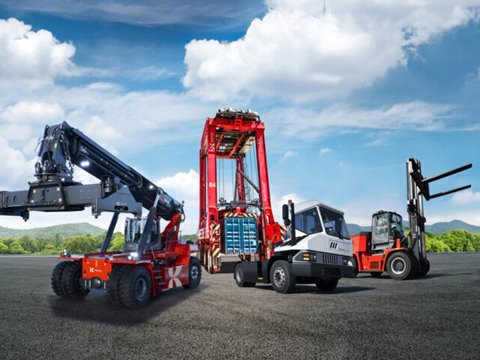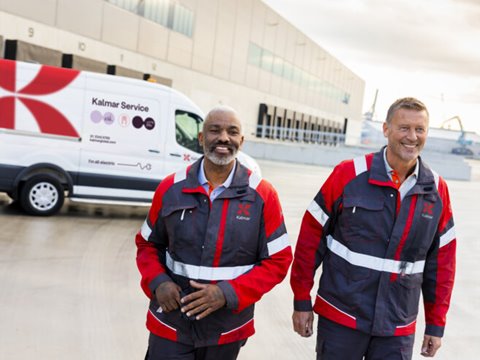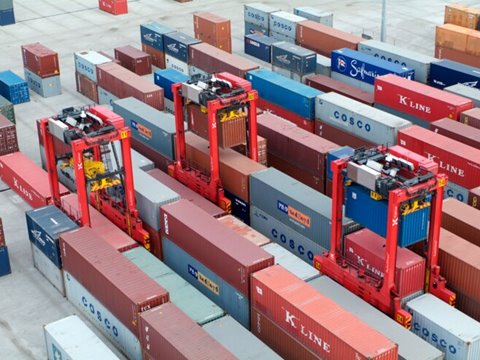
Myth #3: It's better to wait before making the move to electric straddle carriers
When evaluating the possibility of converting to battery-powered straddle carrier operations, some terminal operators argue that it’s better to delay the shift to electric for a few more years until battery technology further advances and becomes more reliable. Is there really something that we should still be waiting for?
"The battery technology used in Kalmar straddle carriers is a completely mature solution," says Timo Alho, Director, Product Management & Business Development, Kalmar. "Batteries and charging solutions will of course continue to develop over the coming years, but the basic concept is already totally sufficient for the application and has demonstrated extreme reliability for more than a decade. We have close to 700 hybrid straddles operating around the world with the same battery technology as our High Power electric straddle carriers, so there is no argument for the concept needing further validation from the field."
The battery technology used in Kalmar straddle carriers is a completely mature solution
Alho points out that irrespective of developments in battery technology, the basic amounts of physical energy needed for container handling will remain essentially unchanged. As a result, even if future battery chemistries do enable larger charge capacities, these will require commensurately longer charging times or higher peak loads on the electrical grid, neither of which may be optimal for the operation. Indeed, the energy demands of straddle carriers are often cited as a barrier to adoption, with claims that full electrification is not feasible in many operational scenarios.
"The charging of electric straddle carrier fleets should ideally be done with intelligent charge management and scheduling," says Sami Yli-Äyhö, Senior Manager, Product Management Horizontal Transportation, Kalmar. "This type of smart charging will go a long way towards managing the power draw on the grid, but if more capacity is needed, it's easy to add stationary battery capacity to balance peak loads. Moreover, when compared with the demands of shore power for large vessels and other terminal infrastructure, the power requirements of straddle carriers are really relatively modest."
Start fast, benefit first
Paradoxically, the most persuasive agreement for not delaying the decision to electrify may be the very fact that terminal electrification is, by definition, a slow long-term endeavour.
"Any terminal that is serious about transitioning to carbon-neutral operations knows that we are talking about projects that will take years," Timo Alho says. "For existing terminals, fleet electrification is the most obvious and easily accessible way to lower emissions, and this will typically be realized in phases as older equipment reaches the end of its service life. If you purchase a new diesel machine today, it will be still generating emissions for your operation over a decade from now. Is that really what you want?"
Alho notes that early adopters will not only be the first to reap the benefits of electrification, but will also have the most flexibility to adjust their operations in the future if needed. Ports like DP World London Gateway, ECT and APMT Pier 400 have already transitioned to electric straddle carrier operations, demonstrating confidence in the technology and its benefits. Even a lack of immediate access to low-cost green electricity should not be considered a barrier to electrification.
Forward-thinking terminals such as London Gateway are taking the steps to lead through electrification, and are already planning ahead to the day when they will have access to green electricity
"Forward-thinking terminals such as London Gateway are taking the steps to lead through electrification, and are already planning ahead to the day when they will have access to green electricity," says Marko Hopeaharju, Head of Horizontal Transportation Solutions, Kalmar. "Electrification offers a range of immediate benefits, most significantly through reduced energy and maintenance costs, and by starting quickly you ensure you are a step ahead of the competition. And if you are looking to reach zero on-site emissions in the next 10 to 15 years, the time to start really is now."
Electrification offers a range of immediate benefits, most significantly through reduced energy and maintenance costs, and by starting quickly you ensure you are a step ahead of the competition.
In the next part of the series, we address another common source of myths and misconceptions – the safety of electric straddle carriers for maintenance personnel and operators.
Related articles
Further reading
Subscribe and receive updates in your email
Abonneer je voor onze publicaties

